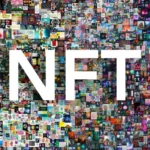Understand What NFTs Really Are begins with grasping their core definition—non-fungible tokens are unique digital assets secured by blockchain technology.
Unlike cryptocurrencies, NFTs cannot be exchanged on a one-to-one basis due to their distinct characteristics.
They represent ownership of digital content such as art, music, videos, virtual goods, and more. In today’s evolving digital economy, NFTs are reshaping how creators, consumers, and investors interact with digital property.
This article breaks down the complexities of NFTs into clear, actionable insights. You’ll learn how NFTs work, where they’re used, their benefits and risks, and what they mean for the future of digital ownership.
Whether you’re an artist, entrepreneur, or simply curious, understanding NFTs is critical in navigating today’s digital landscape.
What Is an NFT?
NFT stands for Non-Fungible Token. It is a digital asset that represents ownership or proof of authenticity for a unique item or piece of content, stored on a blockchain, typically Ethereum.
Fungible vs. Non-Fungible
| Term | Definition | Example |
|---|---|---|
| Fungible | Interchangeable and identical in value | Bitcoin, USD, Ethereum |
| Non-Fungible | Unique and cannot be replaced by another item | Digital art, collectibles, music files |
Unlike cryptocurrencies such as Bitcoin or Ethereum—which are fungible—NFTs are one-of-a-kind.
How NFTs Work
NFTs operate on blockchain technology, using smart contracts to record ownership and transactions. Here’s how they typically work:
- Creation: Artists or creators “mint” NFTs by uploading their digital content to a blockchain platform.
- Storage: The digital file (image, video, etc.) is either stored on-chain or via IPFS (InterPlanetary File System).
- Transaction: Ownership of the NFT can be bought, sold, or traded via marketplaces.
- Verification: All activity is verified and recorded on the blockchain for transparency.
NFTs vs. Cryptocurrencies

Though both use blockchain technology, NFTs are fundamentally different from cryptocurrencies.
| Feature | NFT | Cryptocurrency |
|---|---|---|
| Interchangeability | Non-Fungible (unique) | Fungible (identical) |
| Use Case | Digital art, music, collectibles | Currency, investment, payments |
| Value | Based on uniqueness and demand | Based on market price |
ALSO READ: How to Get Started with Crypto Coins: A Beginner’s Guide to Digital Currency
Types of NFTs
NFTs are more than just digital art. Here are the major types:
- Digital Art: Paintings, drawings, generative art (e.g., CryptoPunks, Beeple art).
- Music & Audio: Songs, albums, sound effects.
- Videos & Clips: Sports moments, short films (NBA Top Shot).
- Gaming Assets: In-game items, skins, characters (Axie Infinity, The Sandbox).
- Virtual Real Estate: Parcels of land in the metaverse.
- Domain Names: Unique web3 domain NFTs (e.g., .eth, .crypto).
- Collectibles: Trading cards, autographs, memorabilia.
- Utility NFTs: Access passes, membership tokens, exclusive content.
Use Cases of NFTs
NFTs have already disrupted several industries. Let’s explore the real-world use cases:
Art & Creative Industries
NFTs empower artists to sell directly to buyers, bypassing galleries and auction houses. Artists also earn royalties from secondary sales.
Music Industry
Musicians can release music as NFTs, allowing fans to own exclusive rights and access. It eliminates the middleman and increases artist profits.
Gaming
NFTs provide verifiable ownership of in-game assets, allowing players to trade or monetize items outside the game ecosystem.
Event Tickets
NFT-based tickets reduce fraud, ensure traceability, and provide extra perks like post-event content.
Identity & Credentials
NFTs can serve as digital diplomas, licenses, or ID verification tools that are secure and tamper-proof.
Benefits of NFTs
NFTs are changing how we view ownership and value in the digital world. Here are some core benefits:
| Benefit | Description |
|---|---|
| Ownership Proof | Blockchain records ensure verified ownership of a digital item |
| Creator Royalties | Artists earn passive income from secondary sales |
| Scarcity & Rarity | Programmable scarcity increases perceived value |
| Interoperability | Usable across multiple platforms and games |
| Authenticity | Prevents counterfeits and plagiarism |
Risks and Criticisms of NFTs

Despite their potential, NFTs come with risks and criticisms:
- Speculative Bubble: Many NFTs are bought for quick profits, leading to volatile markets.
- Copyright Issues: Buying an NFT doesn’t necessarily mean you own the rights to reproduce or distribute the content.
- Scams & Frauds: Fake NFTs, rug pulls, and phishing attacks are common in unregulated marketplaces.
- Lack of Regulation: Legal clarity around NFT ownership, rights, and taxes is still evolving.
The Role of Smart Contracts
Smart contracts are self-executing contracts stored on the blockchain. They manage:
- Transfer of ownership
- Royalties distribution
- Authentication of transactions
For instance, an NFT can be coded so the original creator receives a 10% royalty every time the NFT is resold.
ALSO READ: How to Start a Blockchain-Based Business?
NFT Marketplaces
To buy, sell, or mint NFTs, you’ll need to use a marketplace. Some of the top platforms include:
| Marketplace | Blockchain | Specialty |
|---|---|---|
| OpenSea | Ethereum, Polygon | General marketplace |
| Rarible | Ethereum, Flow | Community-driven, art and media |
| Foundation | Ethereum | Curated digital art |
| Magic Eden | Solana | Gaming and collectibles |
| Nifty Gateway | Ethereum | Celebrity drops and exclusive art |
To participate, you’ll typically need a crypto wallet like MetaMask or Coinbase Wallet.
NFTs and Copyright Ownership
A common misconception is that owning an NFT grants you full intellectual property rights. In most cases, NFT buyers own the token, not the copyright.
What You Usually Get:
- Proof that you own a unique version of the content.
- The right to resell the NFT.
- Access to any perks attached by the creator.
What You Usually Don’t Get:
- The right to reproduce, sell, or license the content.
- Ownership of the underlying media’s IP.
It’s essential to read the terms set by the creator or platform.
NFTs in the Metaverse and Gaming
The metaverse—a shared, immersive digital space—relies heavily on NFTs for property ownership, avatars, and wearables.
Gaming Integration:
- Play-to-Earn: Players earn NFTs through gameplay and can sell them for real-world value.
- Interoperable Assets: Use one NFT across multiple games or platforms.
- Virtual Economy: Entire economies are built around trading in-game NFT items.
Platforms like Decentraland and The Sandbox showcase how NFTs are driving the next generation of virtual engagement.
The Environmental Impact of NFTs
One of the biggest criticisms of NFTs is their carbon footprint.
Why?
Most NFTs are minted on the Ethereum blockchain, which—until recently—used an energy-intensive process called Proof of Work.
Improvements:
- Ethereum’s shift to Proof of Stake (PoS) has significantly reduced energy use.
- Platforms are adopting eco-friendly alternatives like:
- Tezos
- Polygon
- Solana
If you’re concerned about the environment, look for NFTs on PoS-based platforms.
Future of NFTs

NFTs are still in the early stages of development, but they show promising future potential:
| Future Trend | Description |
|---|---|
| NFT Financialization | NFTs used as collateral for loans or fractionalized ownership |
| Integration with AI | AI-generated NFTs and personalized collectibles |
| Government Use Cases | Tokenized ID cards, land records, and licenses |
| Mass Adoption via Brands | Brands like Nike, Adidas, and Starbucks are creating branded NFTs |
| Legal Frameworks | Emerging laws to protect buyers and creators |
With clearer regulation and improved technology, NFTs may revolutionize how we own and interact with digital content.
Conclusion
Understanding NFTs goes far beyond the headline-grabbing art auctions and celebrity endorsements.
NFTs represent a paradigm shift in how we value, own, and interact with digital assets. Whether you’re an artist, investor, gamer, or simply curious, NFTs are worth exploring—but with caution and awareness.
To fully grasp what NFTs really are, it’s important to look beyond the hype and understand the technology, utility, and implications behind them.
As the space matures, NFTs will likely evolve into tools that reshape industries—not just digital novelties.







